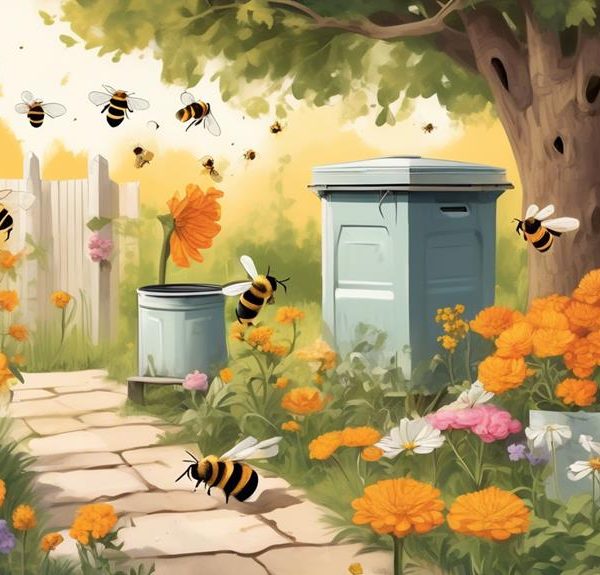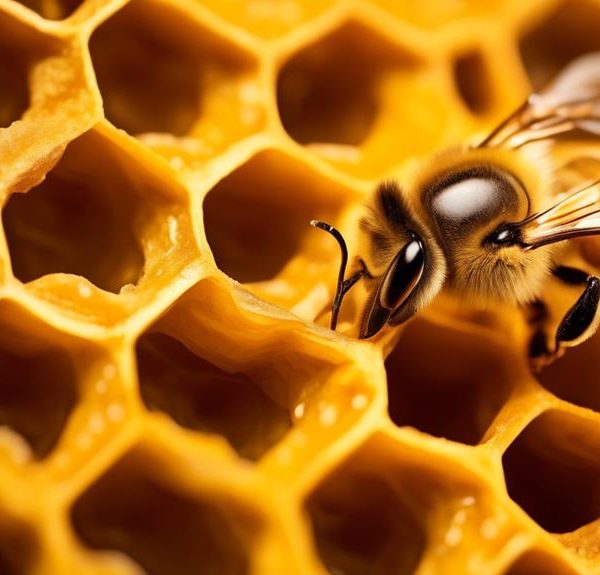Learn about the flammability of beeswax and uncover its fascinating secrets in this enlightening exploration.
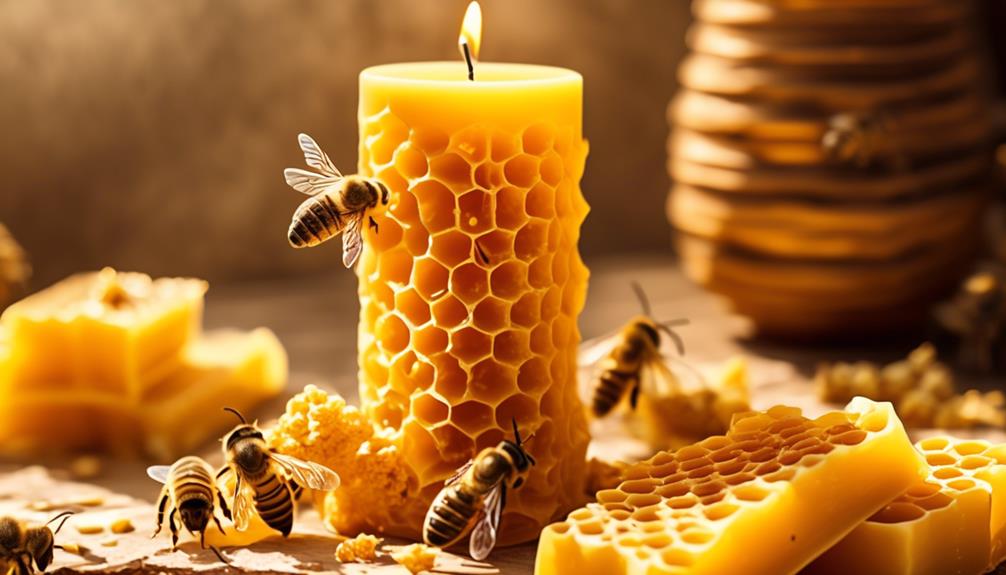
Is Beeswax Flammable?
Like a bee to a flower, you're drawn to the mystery of beeswax. It's been used for centuries in a myriad of ways, from candle making to cosmetics, but today you're pondering a specific question: is beeswax flammable?
Now, you're no stranger to the peculiarities of nature, and you're aware that not everything that burns is necessarily flammable. So let's explore this together, unravel the intricacies of beeswax, and shed light on your burning question.
Are you ready to start this intriguing journey?
Key Takeaways
- Beeswax is flammable but requires a specific temperature to ignite, making it less prone to spontaneous combustion.
- The chemical composition of beeswax influences its flammability.
- Beeswax is commonly used in candle making due to its slow, clean burn and natural properties.
- Safety measures should be taken when handling beeswax, such as using a double boiler and avoiding direct exposure to high heat or flames.
Understanding Beeswax: A Brief Overview
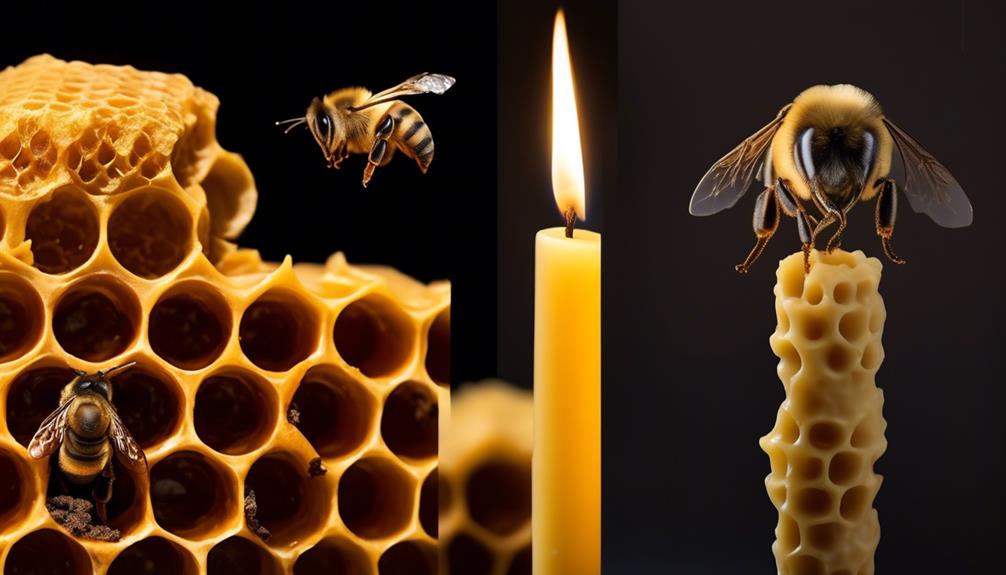
Beeswax is a natural wax produced by honey bees, boasting a complex structure that's both fascinating and useful in numerous applications. It's a byproduct of their intricate honey-making process. When bees consume honey, they produce this wax from their abdominal glands.
You've probably seen beeswax in various forms, from candles to lip balms, to furniture polish. But its versatility doesn't stop there. Its unique properties make it a preferred ingredient in many industries. It's known for its slow, clean burn, making it a safer choice for candles. Its hydrating properties, on the other hand, make it an essential ingredient in cosmetics.
Analyzing its composition, beeswax is primarily made up of esters, hydrocarbons, and fatty acids. This complex mix is what gives it its unique properties, like its high melting point and its hardness. It's these qualities that make it so valuable in various applications.
The Chemical Composition of Beeswax
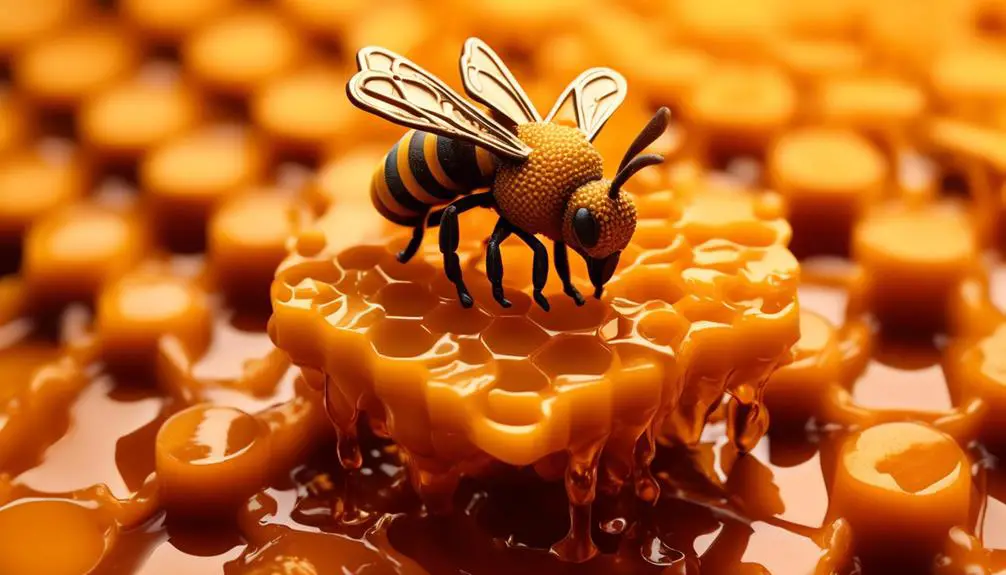
Delving deeper into the composition of beeswax, you'll find it's primarily composed of complex molecules such as esters, hydrocarbons, and fatty acids. The esters, specifically palmitate esters, make up about 70% of beeswax. This is a significant part of what gives beeswax its firm yet pliable consistency.
Then, there's the hydrocarbons. You'll find that around 15% of the wax is made up of long chains of hydrocarbons, which are essentially compounds composed solely of hydrogen and carbon. These compounds are responsible for the wax's water-repelling characteristics.
The remaining 15% consists of free fatty acids and other minor compounds. The fatty acids, like the hydrocarbons, repel water. They also contribute to the beeswax's low flammability. Other minor compounds include trace amounts of essential oils, pollen, and propolis.
Understanding the chemical structure of beeswax is crucial in determining its fire safety. Its flammability isn't only dependent on its physical state, but also heavily influenced by its chemical make-up. The presence of these compounds, with their inherent resistance to combustion, makes beeswax less flammable compared to other types of wax.
Is Beeswax Flammable? Unveiling the Truth
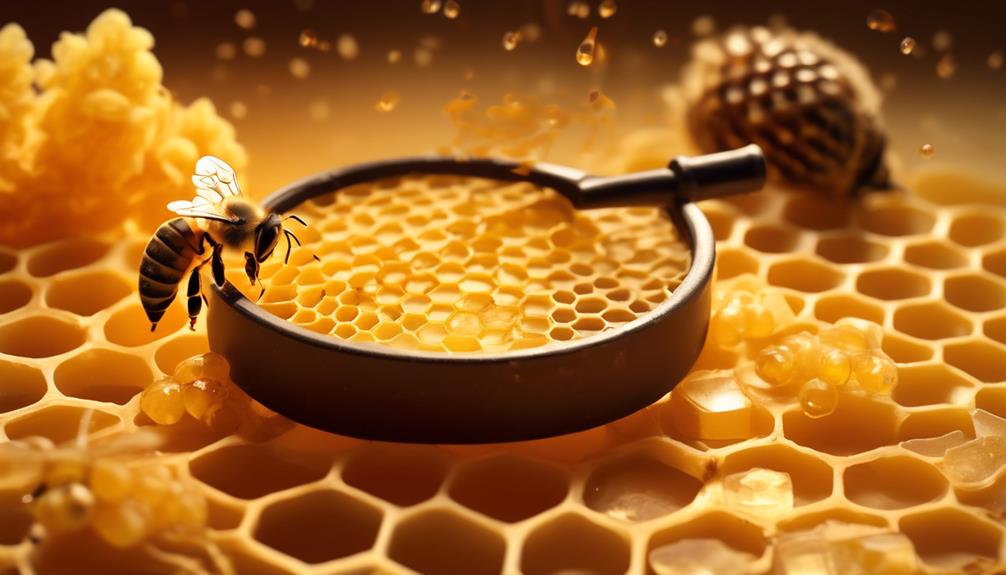
With the knowledge of beeswax's unique chemical composition in mind, let's uncover the truth about its flammability. Contrary to some opinions, beeswax is indeed flammable, but not as readily as you might expect. It's this property that makes it a perfect ingredient for candles.
Beeswax, being high in hydrocarbons, needs a certain temperature to ignite, typically around 204 degrees Celsius. It doesn't ignite easily at room temperature or with a simple spark, unlike many other substances. It's this resistance to spontaneous combustion that sets beeswax apart.
Now, you're probably wondering; if it's so resistant, how does it work in candles? Well, the wick is the key. When you light a beeswax candle, the flame of the match heats the wax near the wick, melting it into a liquid. This liquid wax is drawn up into the wick, where the heat of the flame vaporizes it into a gas. This gas then reacts with the oxygen in the air to create heat, light, water vapor, and carbon dioxide.
Beeswax in Candle Making: Why It's Preferred
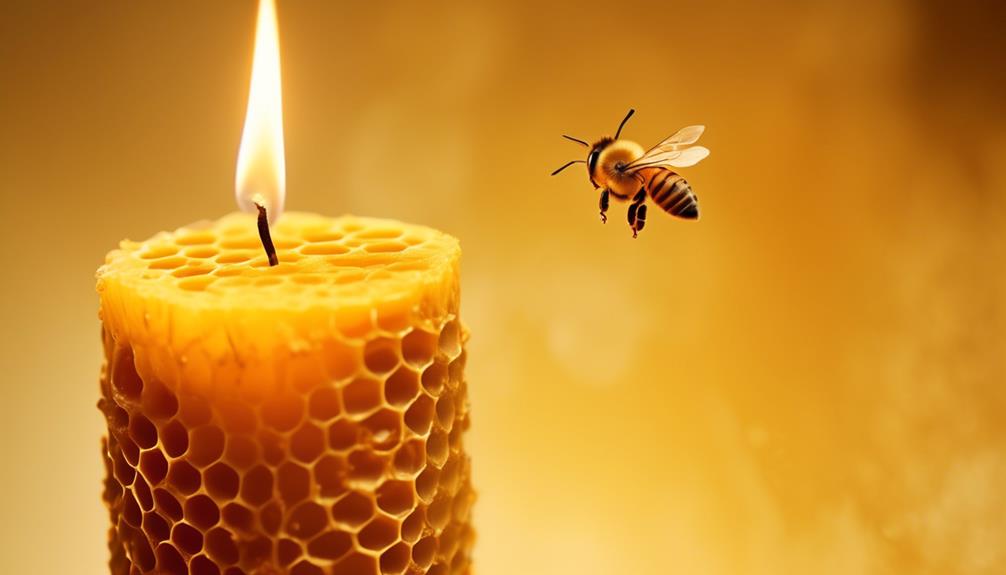
You might be wondering why beeswax is often the preferred choice in candle making. It's primarily due to its unique properties and benefits that outshine other materials.
Unlike paraffin-based candles that emit harmful toxins, beeswax candles are natural, non-toxic, and hypoallergenic. They're also renowned for their long, clean burn, making them a more economical choice in the long run.
Beeswax candles have a distinctive, subtle honey scent that many find appealing. This natural fragrance isn't overpowering and doesn't contain synthetic chemicals that can trigger allergies or discomfort. It's a healthier, more environmentally friendly option, which is increasingly sought after by consumers.
The texture of beeswax also plays a role in its preference. It's firm yet pliable, enabling candle makers to create intricate designs with ease. Moreover, beeswax candles are naturally dripless when made properly, keeping your surfaces cleaner.
Lastly, beeswax has a high melting point, which means it burns at a slower rate and lasts significantly longer than other candles. This quality, combined with its natural, clean burn, makes beeswax the preferred choice in candle making for many.
Safety Measures When Handling Beeswax
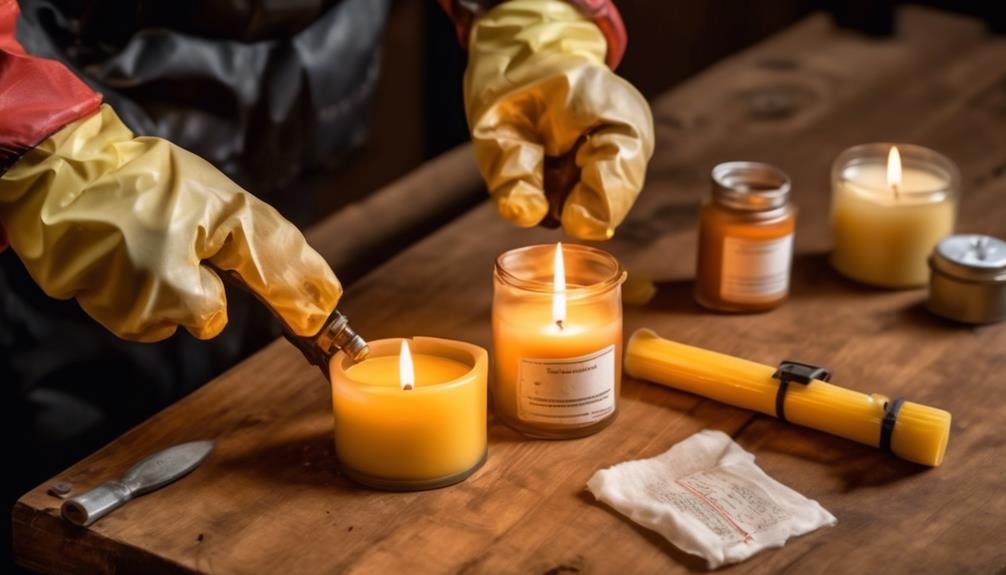
Despite the numerous benefits of beeswax, especially in candle making, it's crucial to understand the safety measures when handling this natural product. Beeswax, like any other wax, can become flammable when exposed to high heat or direct flame. Therefore, you should always ensure that you're using it in a well-ventilated area, away from any potential sources of fire.
When melting beeswax, use a double boiler rather than directly heating it on a stove. This reduces the risk of overheating, which can lead to combustion. If beeswax catches fire, don't use water to extinguish it, as this can cause the wax to splatter and spread the fire. Instead, use a fire blanket or a Class B fire extinguisher, designed for flammable liquids.
It's also essential to handle beeswax carefully to avoid burns. Although beeswax melts at a relatively low temperature, it can still cause skin burns. Always use protective gloves when handling melted wax and avoid direct skin contact.
Moreover, inhaling beeswax fumes can cause respiratory issues. So, ensure to wear a mask when melting it, especially if you're prone to respiratory problems.
With these safety measures in place, you can safely harness the benefits of beeswax.
Frequently Asked Questions
What Are the Different Types of Beeswax Available in the Market?
You're likely to find several types of beeswax in the market.
There's yellow beeswax, filtered directly from the hive, and white beeswax, bleached for a cleaner appearance.
Also, you'll find beeswax in various forms, such as pellets, bars, or sheets.
Organic beeswax is another option, produced without pesticides.
Lastly, there's raw beeswax which contains honey, pollen, and propolis.
Each type has its own specific uses and benefits.
How Is Beeswax Harvested and Processed?
You're curious about how beeswax is harvested and processed, aren't you?
Firstly, beekeepers collect honeycombs from bee hives. Then, they scrape off the caps and use a heated knife to cut the comb into smaller pieces.
These pieces are then melted down and strained to remove impurities.
The remaining liquid cools and hardens into what we know as beeswax.
It's a fascinating process, isn't it?
Are There Any Health Benefits Associated With Beeswax?
Yes, there are numerous health benefits associated with beeswax.
It's known for its anti-inflammatory, antibacterial properties, which can help in wound healing.
Beeswax also locks in moisture, helping to keep your skin firm and plump.
It's high in vitamin A, which can improve skin health.
In addition, it's often used in lip balms and lotions to provide a protective barrier against the elements.
However, always remember to use it responsibly.
Can Beeswax Be Used in Food or Cooking?
Yes, you can use beeswax in food and cooking. It's often used as a coating for aged cheeses and a glaze for candies.
You'll also find it in food wraps since it's a natural and reusable alternative to plastic. However, it's not typically used in large amounts in recipes because it doesn't melt easily.
Always ensure you're using food-grade beeswax, and remember, a little bit goes a long way!
What Are the Environmental Impacts of Using Beeswax?
You might be wondering about the environmental impacts of using beeswax.
As a natural, renewable resource, beeswax doesn't contribute to pollution when used or discarded. It's biodegradable and safe for wildlife.
However, the beekeeping industry can have negative effects on local ecosystems if not managed responsibly. Overharvesting, pesticides, and disease can harm bee populations.
Conclusion
In essence, beeswax is indeed flammable. Its unique composition, rich in hydrocarbons and fatty acids, makes it a prime candidate for candle making. Its slow, clean burn and natural aroma make it a preferred choice among candle makers.
However, like with all flammable materials, ensure to handle beeswax with care, keeping it away from open flames unless intended for use.
Stay informed, stay safe, and enjoy the multiple benefits of this beautiful natural product.

